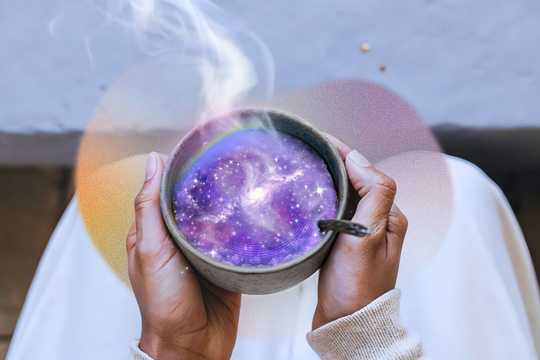Psychedelics and Chronic Pain
Recent studies suggest that psychedelics may help with chronic pain disorders and ease their symptoms, including cluster headaches, cancer-related pain, phantom limb pain, and fibromyalgia. So far, preliminary findings and anecdotal reports show promise in reducing pain and improving the overall mood of individuals.
Chronic pain is not simply a physical experience; it also extends to emotional and psychological aspects. This mind-body connection–or, in some cases, disconnection–raises important questions about how our brains process pain. Unresolved traumas stored in our bodies often cause this disconnection. Current treatments mainly rely on medication to relieve symptoms, although underlying causes or the psychological aspects of pain remain overlooked.
What Is Fibromyalgia?
Fibromyalgia is a widespread form of chronic pain that often detrimentally affects both the physical and mental health of individuals. People with fibromyalgia frequently experience pain, insomnia, restlessness, and fatigue. Fibromyalgia affects about two percent of adults, but diagnosing it can still be challenging. The way the brain processes pain is altered in people with fibromyalgia, leading to abnormal pain processing patterns and increased sensitivity to pain.
In addition to chronic insomnia, hypersensitivity, nightmares, and disrupted sleep cycles, fibromyalgia worsens anxiety and depression. It makes it difficult for individuals to manage pain, as well as it may leave adverse effects on personal lives, careers, and relationships.
Current Treatment Options for Fibromyalgia
There is no specific treatment for fibromyalgia, but some options are available mainly to manage its symptoms. These include movement-based therapies, mindfulness, psychotherapy, and other alternatives, such as medications that relieve pain. Many people take antidepressants or muscle relaxants to alleviate their symptoms, although it doesn’t treat the cause of the disorder.
“Research on fibromyalgia and psychedelics is still in its early stages, but it is already showing promise…A survey performed by researchers at the University of Michigan explored the use of psychedelics among individuals with fibromyalgia. Of those who had experience with psychedelics, 37% reported benefits.”
— Aysu Naz Atalay, MSc
Psychedelic Potential Mechanism of Action
Psychedelics have been studied for their potential to relieve chronic pain symptoms, targeting both neurological and psychological pathways.
1. Role of the Serotonin Receptor
Psychedelics increase serotonin (5-HT) activity, primarily at 5-HT2A receptors, which has a significant role in perceiving pain and mood shifts. Many people who have fibromyalgia have lower serotonin levels, which contributes to depression and fatigue. Therefore, psychedelics may help regulate the serotonin system and help with the secondary symptoms of the disorder.
2. Perception of Pain
Psychedelics have pain-relieving effects by altering how the brain processes the pain. Given their impact on the psychological perception of pain, psychedelics may help individuals better acknowledge and process their pain.
Additionally, psychedelics can reduce inflammation in the body, which is a key factor in the symptoms of fibromyalgia.
3. Nervous System Regulation
Psychedelics may help reduce chronic stress and regulate the nervous system. Since fibromyalgia is often associated with insomnia, fatigue, and brain fog, psychedelics could indirectly alleviate these symptoms, making the disorder more manageable for people affected.
The Role of Trauma, Stress, and Emotional Pain in Fibromyalgia
Fibromyalgia is often described as a disorder causing heightened sensitivity to pain, but it is much more than just a physical condition. Past trauma, such as physical abuse, childhood neglect, or PTSD, can cause fibromyalgia. Since psychedelics can help individuals process emotions and traumatic experiences, they can be potentially helpful in releasing stress in the body.
Trauma, whether physical, emotional, or psychological, can alter the nervous system and have long-lasting effects on both the mind and body. The possible connection between trauma and chronic pain is challenging to address. Individuals with PTSD often experience chronic pain, and trauma and stress-related factors play a significant role.
Victims of sexual abuse, for example, often report higher rates of physical pain. Researchers have also associated with physical abuse and emotional neglect with conditions like fibromyalgia. Trauma can make individuals more attuned to bodily sensations as the brain processes physical and emotional pain through the same neural circuits. Unresolved grief, anger, or fear can, therefore, manifest as chronic pain conditions like fibromyalgia if the trauma remains unprocessed.
Innovative Approaches to Pain Relief: Psychedelic Therapy Insights
Research on Fibromyalgia and Psychedelics
Research on fibromyalgia and psychedelics is still in its early stages, but it is already showing promise. Studies suggest that psychedelics may offer potential pathways to manage pain in the brain.
A survey performed by researchers at the University of Michigan explored the use of psychedelics among individuals with fibromyalgia. Of those who had experience with psychedelics, 37% reported benefits.
In a 2019 study, a case report highlighted the long-lasting analgesic effects of changa, a psychedelic drug containing DMT and β-carbolines. Researchers administered changa to a 57-year-old male suffering from chronic fatigue and pain due to fibromyalgia. After some sessions, the person reported increased emotional stability, pain relief, and reduced fatigue, and lasted 15 days. The case report suggests that changa may have long-lasting analgesic effects. However, more research is needed.
Another study focused on self-medication for chronic pain using classical psychedelics, including LSD, psilocybin, DMT, and ayahuasca, to treat conditions like low back pain, headaches, and fibromyalgia syndrome. Both microdosing and full doses were tested, alongside other treatments such as breathwork, meditation, and movement—which are already considered part of fibromyalgia treatment. The results indicated promising outcomes, with participants reporting increased acceptance of pain, greater hope, compassion, and improved function.
Ongoing and Upcoming Clinical Trials
Several clinical trials are interested in the potential role of psychedelics in fibromyalgia. Below are the ongoing and upcoming trials:
- In 2023, a research team at Maastricht University began a double-blind, randomized, placebo-controlled clinical trial to study psilocybin’s analgesic effects and its impact on pain tolerance.
- Another study in the U.S. focuses on MDMA’s role in pain management.
- The University of Alabama is conducting a double-blind study on psilocybin-facilitated treatment for chronic pain.
- A research group from Brazil is studying the role of CBD/THC’s role in fibromyalgia.
- Additionally, a 2022 study at Imperial College London is ongoing. It investigates changes in brain activity under psilocybin in individuals with fibromyalgia.
Follow your Curiosity
Sign up to receive our free psychedelic courses, 45 page eBook, and special offers delivered to your inbox.Final Thoughts: The Future of Psychedelics in Pain Management
Studies show promising results regarding the therapeutic effects of psychedelics on chronic pain disorders. Since fibromyalgia affects both the body and mind, treatments that focus on body-centered healing—such as somatic therapy, psychedelic-assisted therapy, and bodywork—can be highly effective.
Integrating body-centered healing approaches with psychedelics, mainly through the combination of somatic therapy and psychedelics, may prove beneficial. While many anecdotal reports and preliminary studies show promise, clinical trials are still needed to understand better how psychedelics directly and indirectly impact fibromyalgia.
References
Bair, M. J., & Krebs, E. E. (2020). Fibromyalgia. Annals of Internal Medicine, 172(5), ITC33. https://doi.org/10.7326/AITC202003030.
Løge-Hagen, J. S., Sæle, A., Juhl, C., Bech, P., Stenager, E., & Mellentin, A. (2019). Prevalence of Depressive Disorder Among Patients with Fibromyalgia: Systematic Review and Meta-Analysis. Journal of Affective Disorders, 245, 1098-1105. https://doi.org/10.1016/j.jad.2018.12.001
Kia, S., & Choy, E. (2017). Update on Treatment Guideline in Fibromyalgia Syndrome with Focus on Pharmacology. Biomedicines, 5(2), 20. https://doi.org/10.3390/biomedicines5020020.
Yasin, B., Mehta, S., Tewfik, G., & Bekker, A. (2024). Psychedelics As Novel Therapeutic Agents for Chronic Pain: Mechanisms and Future Perspectives. Exploration of Neuroscience, 3(5), 418-433. https://doi.org/10.37349/en.2024.00058.
Castellanos, J. P., Woolley, C., Bruno, K. A., Zeidan, F., Halberstadt, A., & Furnish, T. (2020). Chronic Pain and Psychedelics: A Review and Proposed Mechanism of Action. Regional Anesthesia & Pain Medicine, 45(7), 486-494. https://doi.org/10.1136/rapm-2020-101273.
Glynos, N. G., Pierce, J., Davis, A. K., McAfee, J., & Boehnke, K. F. (2022). Knowledge, Perceptions, and Use of Psychedelics Among Individuals with Fibromyalgia. Journal of Psychoactive Drugs, 55(1), 73-84. https://doi.org/10.1080/02791072.2021.2022817.
Hodgin, K. (2024). Use of Psilocybin and Other Classic Psychedelics in Fibromyalgia: A Survey Study. UAB Digital Commons. https://digitalcommons.library.uab.edu/etd-collection/3845/.
Ona, G., & Troncoso, S. (2019). Long-Lasting Analgesic Effect of the Psychedelic Drug Changa: A Case Report. Journal of Psychedelic Studies, 3(1), 7-13. https://doi.org/10.1556/2054.2019.001.
Bornemann, J., Close, J. B., Spriggs, M. J., Carhart-Harris, R., & Roseman, L. (2021). Self-Medication for Chronic Pain Using Classic Psychedelics: A Qualitative Investigation to Inform Future Research. Frontiers in Psychiatry, 12. https://doi.org/10.3389/fpsyt.2021.735427.






